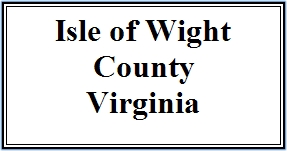| The Life of Sir Richard Woorseley, Knight and Barronet.
When he wase younge he wase taught and educated by his fathor, Mr. Thomas Woorseley, a man learned and of very good partes; when he accomplishched ye adge of 12 yeres his fathor putt him to Winchester Colledge where he profited very well in his learninge. Abote 15 yeres of adge his fathor dyed, then he wase putt to Oxforde, to Magdeline Colledge, where with the helpe and laboure of his tutor, one Castilion, he grewe to be a very pregnant scholler, and verie expert in ye Greeke tounge; well seene in all learninge. When he wase scholler in Winton Colledge, ata a huntinge daye with a stripe of a hassell twigge he lost one of his eyes, it so ordered as hardlie to be discerned. About 20 yeres of adge, his tutor carringe of him into Berkeshyre to his brother's, Sir Francis Castilion, he owt of his respect to them both, Sir Rychard Woorseley and Sir Henry Neville, for Sir Francis had maryed Mr. St. John's dawghtor, sistor to Sir Rycharde's mother, so he carried him to Billingbeare to Sir Henry Neville's howse, where he fell in loue with Mstrs. Francis Neville, one of ye handsomest little women that wase in this kingdome, or that ever at least I sawe; I think fancie prevailed over portion. Then Sir Henry gott him to be Knyghted, and aftorwardes to be a Barronet; then he came into ye Island to be a howsekeeper and to be putt into ye Commission of ye Peace, whose oathe I gaue him; he kept a verie bountifull howse, and gaue greate entertaynement; lived in greate repute in his counterye and verie hapilie. He had singular good gwyftes both of art and nature, a verie honest man where he did affect, butt wothall verie nice and scrupulous in doinge of coortises, as to lend moneyes, or be bound for anye; for he desired to be bound with Sir John Dinglie to ye Ordinarye on his maryadge, that there wase no precontract betweene him and anie other. Verie collerick, butt his judgment woold well moderate itt, wonderful studious, insomutch as he affected no counterye spoortes, eythor hawkinge or huntinge, but wholly spent his tyme when he wase alone att his booke; verie merry, and a notable good fellowe in companie that he knewe. He delyghted much in flinginge of cuschions at one another's heddes only in sporte, and for exersise; until that with a cuschion at Gatcombe I wase lyke to putt foorth his other eye. He loued to keep a good table, otherwise he woold haue nothinge more than necessarie nor hardly that, not respectinge good clothes. Beinge in a parliament, ye last of Kinge James, soom of his howsehold gott ye small poxe, and comminge home soom of his children had it, and afterwards himselve, who beinge not so careful as he showld, and remouinge into his wyfe's chawmber aftor they weare owt on him, certaynely tooke cold and dyed in ye flower of his adge, to ye greate gryfe of his fryndes and generoll loss to ye whole counterye; he is buryed in ye sowth chawncellin Godshill Church. Sir Rychard Woorseley, my good frynd, who both for naturoll and artificiall gwyftes had not his fellowe in owre cowntrie, and his fayre ladye, who for bewtie and virtue is woorthie of ye lyke commendations, often laye att my howse with mee 3 or 4 dayes togeathor; he dyed unfortunately of ye small poxe, and his ladye wase lyke to runn ye same fortune. Mtrs. Ann Worseley, dawghtor to Sir Rychard Woorseley, ....she was buryed by her fathor in ye chawncellin Godshill Church, where sutch a fathor, sutch a dawghtor lyeth; both sutch as I must confess I nevor knewe any that exceeded them. They 2 beinge gone, the glory of that howse is passed away, and although there be more branches of ye sayde stocke yt left, yet they will proove Crabbs in respect of that fayre fruit.... To wryght an epitaph on ye fathor and ye dawghtor I showld extenuate rathor than demonstrate theyre woorth. Only frame an idea of a most perfect man and woman, and then beleve yt sutch they weare. Sir Rychard Woorseley, ye mann of learning, patron of virtue, frynd of good fellowes, and credite both of his howse and ye Islande, lyeth buryed in ye upper ende of ye sowthe chawncell in Godshill Church,... |

